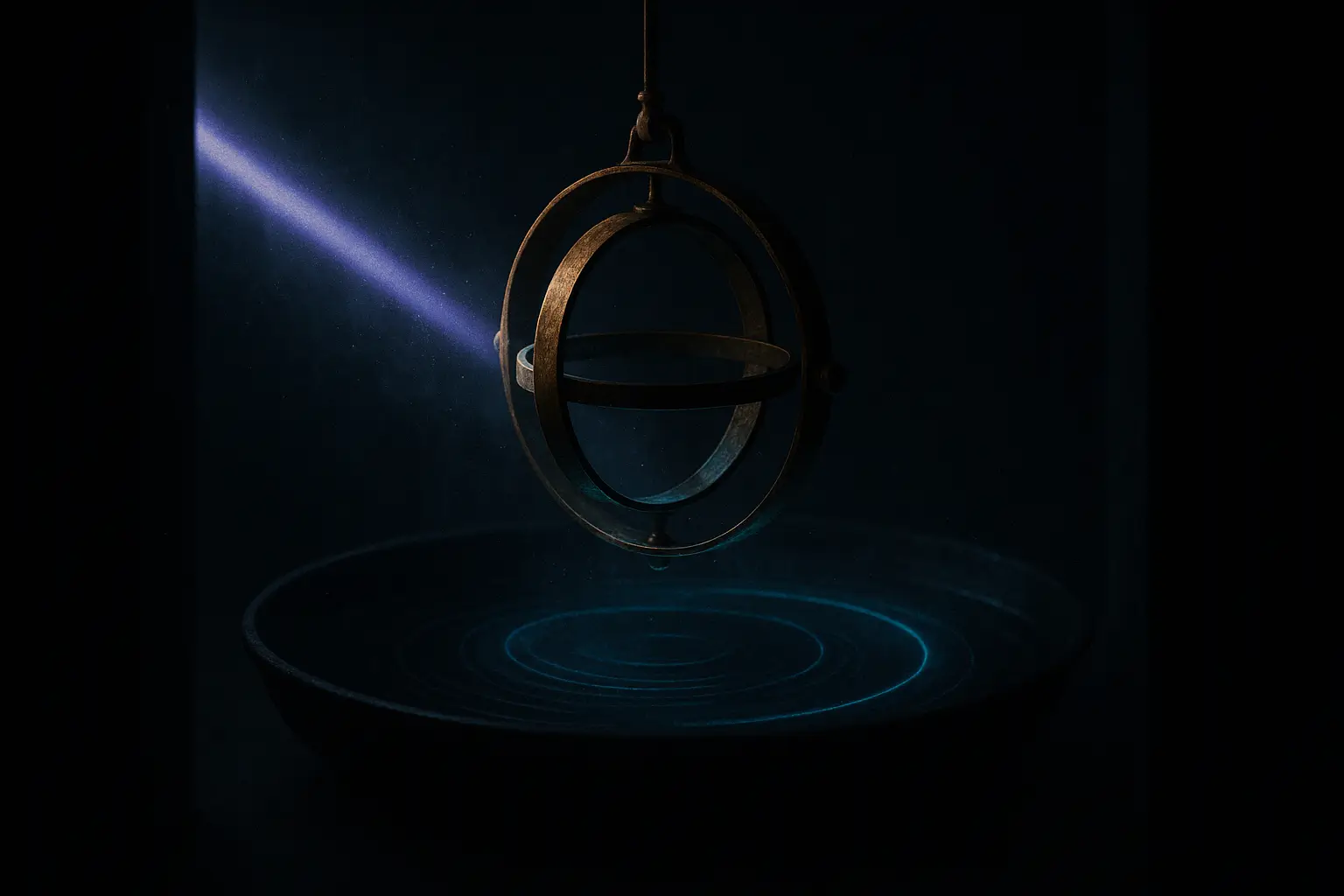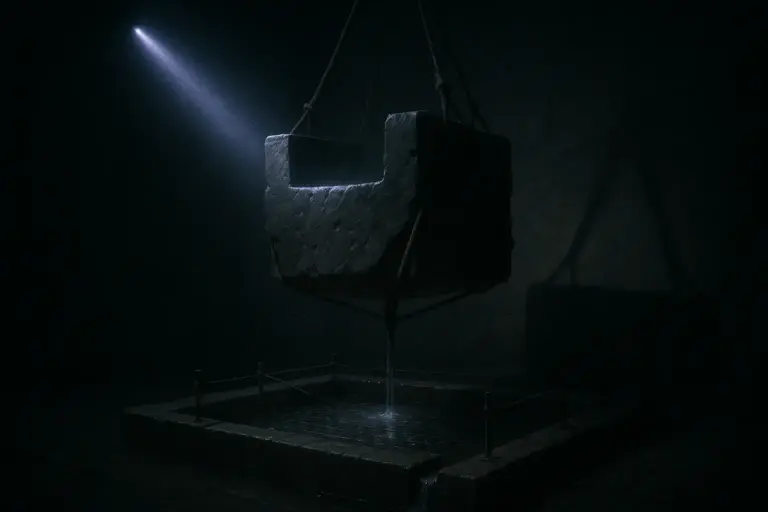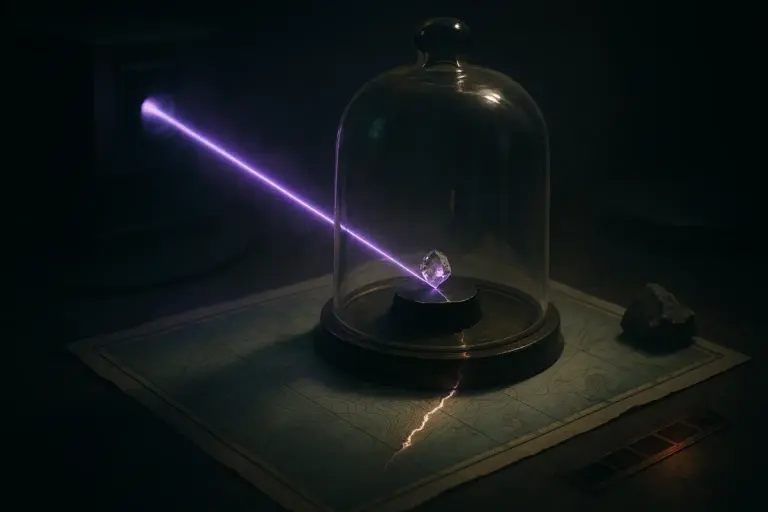The Lost City of Atlantis: Tracing the Origins of a Persistent Legend
Plato’s file describes concentric rings before the text cuts, leaving the lost city of atlantis a set of coordinates with no geological anchor.
Under a desk lamp, the translation shows a sentence in Critias cut short. Plato’s report places an island power beyond the Pillars of Heracles and dates its fall to nine thousand years before Solon—far deeper than the Bronze Age we expect. In Timaeus and Critias, the city is mapped in concentric rings of earth and seawater, measured channels, and metal glint. Yet the manuscript trails off, like a reel left spinning. The lost city of atlantis arrives not as a dossier—precise coordinates, impossible chronology, and a silence where a conclusion should be.
What the Video Adds (Quick Summary)
- Compares Plato’s concentric-ring description with measurable volcanic calderas and submerged shelf topography
- Reviews Santorini’s seventeenth-century BCE eruption as a candidate catastrophe, cross-referenced with radiocarbon and tephra analysis
- Demonstrates how multibeam sonar and ETOPO bathymetry reveal drowned ledges near Gibraltar and the Azores—yet none match Plato’s architectural brief
- Explores how oral memory can preserve real disasters even when the city functions as allegory rather than excavation site
- Examines the tension between geomythology and evidence, showing why the hunt for the lost city of atlantis continues to move with each generation of instruments

Plato sets the Atlantis anomaly beyond the Pillars of Heracles
The trail begins in Timaeus, where an Egyptian priest allegedly briefs Solon on a seafaring power situated past the Pillars of Heracles, “greater than Libya and Asia,” destroyed by flood and earth tremors some 9,000 years before Solon’s visit. The figure stretches memory past the reach of Greek archaeology, yet it is the date the record gives. The geography anchors the buried timeline in the Atlantic approaches, not the Aegean, a placement that resists easy Mediterranean relocation. (Source: MIT Classics, 2009-01-01, Timaeus translation)
The chain of custody is explicit: priests to Solon, Solon to Dropides, Dropides to Critias, Critias to Plato. It reads like provenance in a case file. The tone is philosophic, but the logistics—distances, canals, political offices—suggest a narrative designed to press realism into allegory’s shape, or allegory into realism’s skin.
Concentric rings orichalcum and the civic order of the Atlantis myth
In Critias, the description sharpens: three concentric rings of sea and land encircle a central hill; bridges and channels knit them together; the outer plain is gridded and drained; the walls are clad in red, white, and black stone, with the inner circuit sheathed in orichalcum, a prized alloy. A law code is said to have been engraved on a pillar in the temple of Poseidon, marking a ritual order that governed war and succession. The layout reads like an engineering brief more than a mythic blur. (Source: Project Gutenberg, 2008-08-15, Critias full text)
These specifications are why surveys chase circular lagoons and vanished ports. The canal to the sea, the ringed harbors, and the formal districts invite geospatial matching. For investigators, such particulars justify treating Plato’s Atlantis as a testable hypothesis, even if the numbers and metals arrive through a philosopher’s staging.
“The map room smelled of salt and old ink.”
When Critias breaks and the Atlantis legend is recut by translation drift
The record never finishes. Critias ends mid-thought, its account of the war with primordial Athens suspended as if the scribe lifted his pen and never returned. The absence is not a rumor; it is visible on the page, a deliberate stop or a lost leaf. For historians, the fracture warns that any ending has been supplied by later hands. (Source: MIT Classics, 2009-01-01, Critias translation)
Across translations, terms shift. Orichalcum may denote a copper alloy, not a miracle metal; measures like stadia vary by polis; the Pillars reference is usually Gibraltar, not a movable signpost. Secondary surveys often emphasize that many scholars read the Atlantis myth as philosophical allegory, while noting dissenting literalists who hunt for matches on maps. (Source: Wikipedia, 2004-12-28, Critias overview)
From Santorini ash to seismic subsidence testing the lost city of atlantis
Geology offers partial echoes. The Bronze Age eruption of Thera on Santorini produced ashfall and tsunamis capable of crippling Minoan networks, and the Aegean preserves drowned ports and quake-broken terraces. Yet Plato’s oceanic setting beyond the Pillars and his deep chronology depart from a simple Aegean template. The pattern could be composite memory—earthquakes, floods, and imperial hubris—compressed into one moral geography.
Subsidence can erase low islands; tsunamis can fold harbors into littoral flats; deltas migrate and bury towns. But none of these processes, by itself, verifies the dossier’s distinctive tri-rings, law pillar, and Atlantic placement. Without inscriptions, urban plans, or metallurgy aligning with the text, the lost city of atlantis remains a disciplined uncertainty—investigable, not confirmed. Modern ancient engineering puzzles continue to illuminate what can be measured and what must remain speculative.
“Tape clicks—the rest is inference and margin notes.”
Sources unsealed reading Plato dialogues Timaeus and Critias
PRIMARY — Timaeus establishes the geographic placement beyond the Pillars of Heracles and the nine-thousand-year timeline that challenges conventional archaeology (Source: MIT Classics, 2009-01-01, Timaeus translation)
PRIMARY — Critias full text noted for urban layout, metals, measures and the unfinished ending (Source: Project Gutenberg, 2008-08-15, Critias translation)
PRIMARY — The Atlantis dialogue compiled in the Jowett tradition for cross-checking vocabulary and staging across both dialogues (Source: Internet Archive, 2022-09-02, Jowett compilation)
SECONDARY — Overview of Critias with reception history and scholarly interpretations of the myth as allegory and as attempted history (Source: Wikipedia, 2004-12-28, dialogue summary)
Final transmission ash light on a redacted shoreline
Spools of paper glow violet under the lamp as tide-maps overlay a city drawn in rings, canals, and myth. The file closes beside a compass, a quiet line between ocean rumor and measured ground, archived with Home, Hidden History, and Ancient Civilizations marked in the margin. Atlantis persists as a method more than a destination, a question we test against stone, silt, and text. Signal fading—clarity remains.
They Don’t Want You to Know This
Join the society of the curious. Get early access to leaked findings, hidden knowledge, and suppressed discoveries — straight to your inbox, before they vanish.




